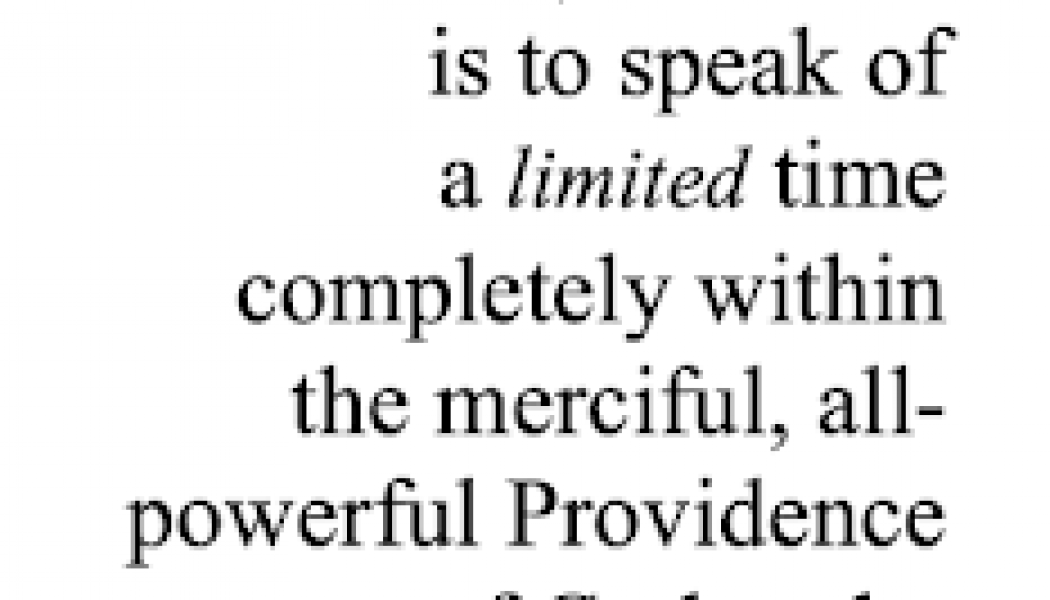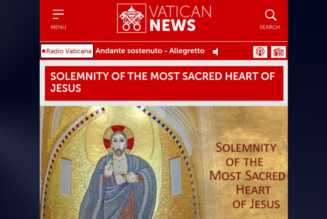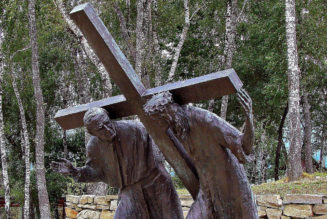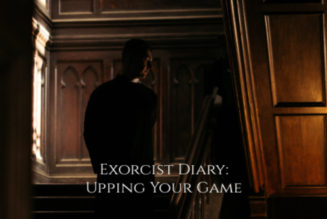One afternoon about thirty years ago I got a call from my mom. She had been talking to some of the ladies at Church, the really holy ones (that was Mom’s way of speaking about someone who did a lot of Church things). “Anne, what is this about three days of darkness? Do I need to get blessed candles? How many would we need?” Her voice was pinched with anxiety.
The Church ladies had scared Mom to death.
It took me a while to talk her down with the help of the Ignatian rules of discernment of spirits: St. Ignatius had noticed that the Holy Spirit leads the devout onward by tender urgings, and generally uses “tough love” only when he has to wake up someone who is stubbornly entrenched in patterns of sin. The evil spirits, however, work the other way around, choking the devout in anxiety, fear, scruples and the like, while coddling those who are already under the dominion of sin. So I asked: “Mom, is this helping you to trust God’s love more or making you worry? Is it helping you to believe in God’s love and in the power of grace, or are you more inclined to trust in what you can do to protect yourself from God’s power?”
According to the usual rendition of the “three days of darkness prophecy,” a supernatural darkness will cover the earth for three days, during which time all the faithful must shut themselves in their homes with the windows completely covered up. The only source of light will be from blessed candles made from beeswax. Outside, demonic forces will have full sway, so all are warned to resist any temptation to curious peeking.
The origin of the “three days of darkness” prophecy seems to come from Bl Anna Maria Taigi (1769-1837), though there is no direct quote from her as to the “three days.” It was, rather, her confidante, Msgr. Natale who insisted that there would be “three days” of darkness. Even after his death, people kept wondering if this was symbolic or meant actual physical darkness. Considering that most of Taigi’s prophecies seemed to center on the takeover of Rome by the process of Italian unification, and that they were understood also by Bl Pope Pius IX as referring to himself and to the various crises of the 19th century, it might be wise to put Taigi’s prophecies to one side.
The only only other credible voice that I have found to refer to “three days” is that of Padre Pio, but even here the references are vague and untraceable. Only one offers dates, but it is from a YouTube transcription in English and does not provide a photograph of any original, so there is very little for me to go on (in pandemic conditions) to authenticate its contents. (I am inquiring of the Franciscans in San Giovanni Rotondo if originals of his letters in this regard exist.) This is a process I am still working on.
So let’s go to the most reliable source of all: the Bible! Any mention of “three days” should first of all direct our attention to the death and Resurrection of Jesus: there is nothing (“nothing in all creation,” St Paul tells us) that can come close to the darkness of Good Friday or the power of the Resurrection.
In the Bible, a period “three days” connected to suffering usually signifies a limited timeframe and points to God’s mercy and/or power over the forces of death
- In Genesis 42, Joseph in Egypt, recognizing his brothers, had them thrown into jail “for three days” while preparing to provide them abundant supplies and reunite the family in Egypt.
- When King David sinned against God by ordering a census (counting on his military might rather than on God’s power); he was given a choice of penalties: three years of famine, three months of fleeing from his enemies, or three days of severe pestilence. David prefaced his answer with: “Let me fall into the hands of the Lord, for his mercy is very great. But let me not fall into human hands.” And so, of all the options, he chose the three days of plague (2 Samuel 24:13-17). Here, the “three days” are explicitly associated with God’s mercy.

- Queen Esther called on the Jewish community of Susa to join with her in fasting for three days in preparation for her intervention with the King (Esther 4:15-17). She was gloriously triumphant, and the enemies of the Jewish people were overcome.
- Jonah famously spent three days and three nights in the belly of the whale in a sign of the death and Resurrection of Christ (Jon 1:17).
- Mary and Joseph spent “three days in sorrow” searching Jerusalem for the child Jesus at Passover time, finally finding him in the Temple among the teachers (Luke 2:46-50).
- Jesus spent “three days and three nights in the heart of the earth” from his death to the moment of the Resurrection (Matt 12:40).
In the Book of Revelation, 3½ is a repeated symbolic number. According to Dr James Papandrea (The Wedding of the Lamb), the ½ is like a “signal” of a new thing about to spring forth from an as-yet incomplete situation. These prophetic visions all take place in the earthly domain; they are in the dimension of time, where things are still unfolding. (The Book of Revelation alternates between events in Heaven and on earth.)
- In Revelation 11: 2, the nations will trample the Holy City for “42 months” (3½ years), while in 11:3, two witnesses in sackcloth will prophecy for 1260 days (3½ years) before being killed by the beast from the Abyss.
- The witnesses’ bodies will remain on display for 3½ days before they are raised from the dead and taken to Heaven.
- In Revelation 12:6, the Woman was given refuge in the wilderness for 1,260 days (3½ years)
- In Revelation 12:14, the Woman was given wings to fly from the Dragon and she was again protected and nourished, “for a time, and times, and half a time” (1+2+½= 3½).
- In Revelation 13:5, the beast was given a mouth to speak and authority to act for 42 months (3½ years).
The definitive action in the Book of Revelation takes place in Heaven, and culminates in the Marriage Feast of the Lamb: this is the Wedding to which we are all invited (as the Bride!).
Conclusions
In the Bible, “three days” of suffering is a sign of God’s mercy. It sets a brief limit to human pain and promises that God’s power will triumph over all the forces of death (whether in the form of sickness, war, or death itself). To speak of “three days of darkness” is to speak of a limited time completely within the merciful, all-powerful Providence of God, to be followed by the bright light of day.
Authentic prophecies always direct our attention to the glorious outcome guaranteed by the Resurrection of Jesus.
Any “chastisement” authentic prophecies may refer to is not the point, any more than the sepulchre of Holy Saturday is the main message of Christianity. In this light, a helpful rule for discerning purported prophecies could be: How much explicit emphasis does the message give (not just an individual message or in its verbal expression, but as a whole, and in its overall emotional convincing power) to the Resurrection of Jesus and his complete triumph over all the “principalities and powers…of darkness”?
In these last weeks of Lent, that is an important question!
I have been researching other similar “chastisement prophecies,” and as I develop these themes, hope to include them in future posts. I think this is important for the peace of many hearts.
Join Our Telegram Group : Salvation & Prosperity







